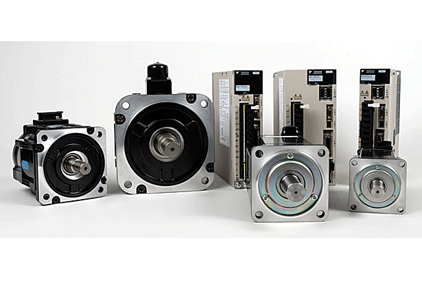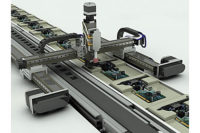Details drive choice of servomotors

In a competitive marketplace, details help differentiate one product from another. A thoughtful feature or a more rugged design can make all the difference. Consumers who buy based solely on price often end up disappointed.
Servomotors are no different. Many engineers mistakenly believe that all servomotors are the same and the only differentiating factors are power and price. In truth, engineers should consider many factors when choosing the best servomotor for their application. These include:
- Brushed or brushless.
- Rated speed and torque.
- Overload time.
- Torque-to-inertia ratio.
- Resolution.
- Frequency response.
- Mounting panel space.
- Mean time between failures.
- Range of product offering.
“We have often shocked customers by putting a lower wattage servo in an application and outperforming the previous servo,” says Michael Miller, supervisor of regional motion engineering at Yaskawa America Inc.
That’s because engineers are used to specifying motors based on horsepower at a standard speed. And, preferring to be safe than sorry, they often oversize the motor for a particular application. The problem, explains Miller, is that there is no standard speed rating for servomotors. Two servomotors can have the same wattage rating, but perform differently. One can be wound to produce less speed and more torque, while the other can be wound to produce more torque and less speed.
“If your application doesn’t need high speed, you may be wasting the available power,” adds Jerry Tyson, regional motion engineer at Yaskawa.
He advises engineers to look at a servomotor’s continuous and intermittent duty ratings for torque. The continuous rating represents the torque that the motor can deliver 24/7 without overheating or becoming damaged. The intermittent rating is the torque that the motor can deliver only for short bursts of time. These bursts are typically used for acceleration, deceleration and dealing with brief load disturbances.
“The amount of time that a servo can stay in the intermittent range varies greatly between manufacturers,” says Tyson. “If the motor can stay in the intermittent range for seconds as opposed to milliseconds, that alone can make a huge difference in the size of the motor for the application.”
Inertia is another important specification to consider when selecting a servo. In a closed-loop system, the ratio between inertia of the rotor and the inertia of the load is critical. “The ratio must be within a certain range,” says Tyson. “Otherwise, the tail starts wagging the dog. With a lower inertia motor, you may have to go up a size or two or three to get a better inertia match so you can control the axis well.”
In general, longer, thinner motors have less inertia than shorter, wider ones. The amount of permanent magnet material in the rotor also makes a difference. The right gearbox or other mechanical transmission system can also help to get the ratio in the ballpark.
One more factor to consider is the resolution of the motor’s feedback device. For example, Yaskawa’s Sigma 5 servomotor is equipped with a 20-bit encoder.
“That’s more than 1 million counts per revolution,” says Tyson. “To put that in perspective, early servomotors had encoders that produced 4,000 counts per revolution. And the encoder on our next-generation motor will have [more than 16.7 million] counts per revolution.
“Why would you need that many counts? The answer is stiffness. A servo system is always looking at the difference between the commanded position and the actual position. It wants to drive that error to zero. The faster it can see it’s out of position, the quicker it can act to make corrections.
“Imagine you’re driving at night. You’re at the wheel, but your passenger has control of the headlights, and he’s turning them on and off. If he does that slowly—which is analogous to a low-resolution encoder—you’re going to stray off the road. The faster he turns your lights on and off, the more you’ll be able to see where you’re going and drive in a straight line.”
Looking for a reprint of this article?
From high-res PDFs to custom plaques, order your copy today!






